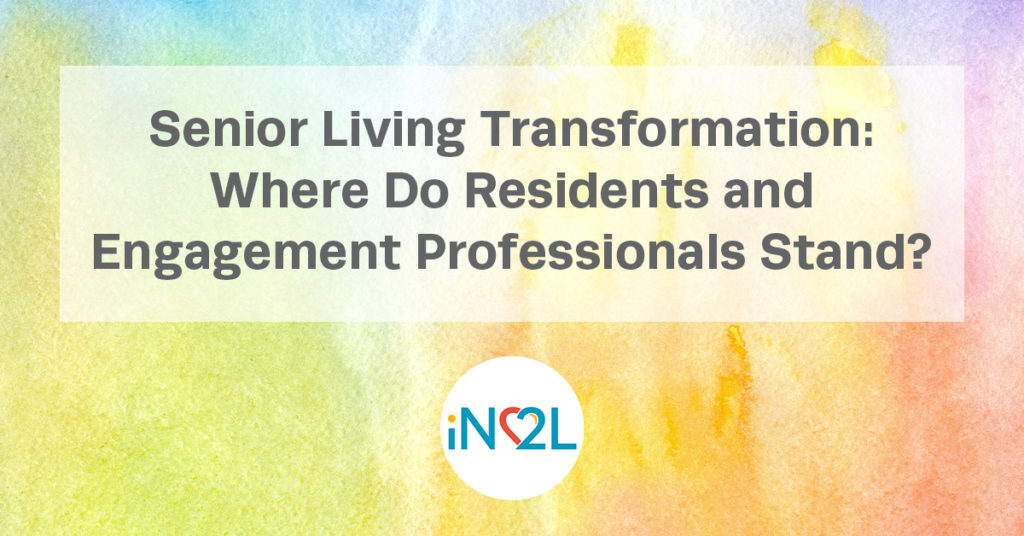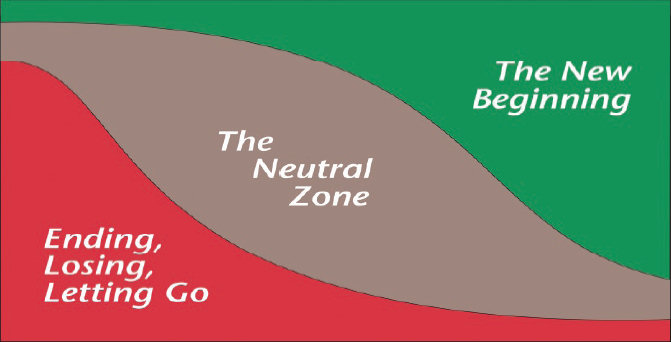We’re diving into part two of our 2021 senior living transformation discussion. If you haven’t read part one yet, you can find it here!
Resident engagement is core to this new generation of senior care, and we wanted to explore this further with the people who know it best: residents. We spoke with some active community residents and experienced staff to illustrate and support our predictions for senior living transformation for 2021 and beyond.
Where Do Residents Stand?
We started with residents, Jack from Front Porch in California and Jim from Cypress Village in Florida. Jack brought up the remarkable acceptance of Zoom among residents. He elaborated, “We initiated a resident forum on Zoom every day at 3 p.m. for half an hour where any resident who wanted to could congregate. It helped residents to get familiar with Zoom so that they could go out on their own and begin to connect with others beyond the community. The program allowed residents who left the community for safety elsewhere or who were confined to the Care Center to stay connected.”
“I believe we as a nation, and particularly seniors, will come out stronger on the other side of this pandemic, whatever that ‘new norm’ will be!”
Jim, a resident at Cypress Village
Jim has seen many examples of residents’ willingness to accept technology. New behaviors that include increased usage of telehealth, virtual reality, and fall detection sensors are emerging in the senior community and are improving daily life for seniors. Jim’s optimism comes across loud and clear: “I believe we as a nation, and particularly seniors, will come out stronger on the other side of this pandemic, whatever that ‘new norm’ will be!”
Both Jim and Jack acknowledge the pain and loss that has surrounded both of their communities in 2020. But they have also seen the heroism and resilience, whether it’s residents independently making masks for each other or a retired doctor putting his life in jeopardy to help others even without PPE.
“With assistance, residents have welcomed the resources of the digital age. Residents have learned what they can do without dependence on staff. That is empowering…”
Jack York, iN2L Co-Founder
Both gentlemen brought to life the whole concept of the new beginning from William Bridges’ definition of transformation, which was discussed in the first half this two-part piece. This commentary from Jack sums it up best: “Most residents, even the very old and very frail, don’t think of themselves as old people. They welcome real engagement with peers. With assistance, residents have welcomed the resources of the digital age. Residents have learned what they can do without dependence on staff. That is empowering, and if that sense of self-sufficiency can continue, senior living may begin to shed the stigma of sterile institutionalization that requires residents to sacrifice freedom for security.”
Where Do Staff Stand?
With many residents ready (and able) to transform, where do staff stand? Talking with several caregivers, and following others in the press, the endings were very clear: They were deeply affected by the shake-up in community life and the letting go of longstanding routines in lifestyle and activities, and maybe even the end of big events forever.
But the middle is what we loved. What started as chaos on how to engage during a quarantine quickly blossomed into creativity and innovation. For example, staff at John Knox Village at Pompano, Fla. made videos for residents on how to make video calls on their own. Masonic Villages of Pennsylvania began paying entertainers to record custom events that had been scheduled to be in-person. This community also re-imagined bingo as a virtual event for hundreds of residents. Many other communities also created virtual travel events, happy hours, or wellness classes.
As we said in our ebook, Success in Senior Living’s New Frontier: Strategies to Optimize Activities and Engagement, the new beginnings that can emerge from this past year can be transformative. We should not return to the status quo, to what was familiar. That is exactly what William Bridges warns against. We must listen to the residents’ voices. We need to think of them as capable, self-sufficient, and not unintentionally take away their freedoms in the spirit of safety.
Can our new beginnings frame senior living communities as flexible, adaptable, willing to try new adventures, new activities, and wanting to push technology to its limits? Can we allow residents to surprise us with their resilience (again) and not put limits on their abilities to keep learning and changing? What would that take?
We believe senior living transformation is a matter of throwing away the old playbook and building on what we’ve started.
Specifically, here are six principles that should guide the lifestyle professionals of tomorrow:
- Focus on the 50% of residents or volunteers READY to come back—not just the other 50%!
- Virtual activities hit the mark for many—don’t lose those residents when in-person returns!
- Encourage more resident-driven activities—equip and empower!
- Find and keep new sources of activities or content partners—remember you are curators!
- Be a champion of technology: You have already proven you can leverage it!
- Stand up and be heard! The pandemic has thrust the importance of activities and programming into the light, so take advantage and be vocal.
If we make the most of this time as leaders, we can transform how we live and work in senior living. We need to thoughtfully learn from this difficult period and refuse to slip back into old patterns. If we instead rethink our approach to how community staff and residents engage with one another, then 2021 can be a truly transformative year.





